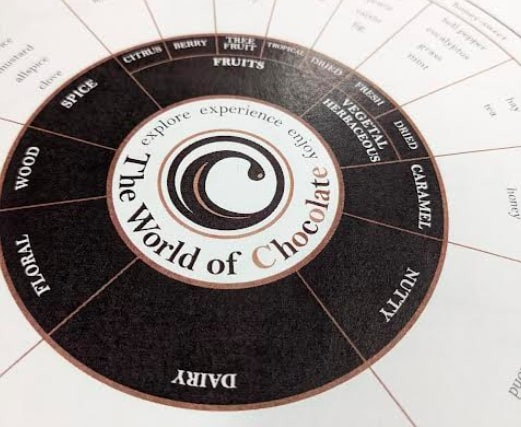From Bean to Bar: A Chocolate Soirée
Concordia Food Studies Group Talks Cacao and Colonialism
On Oct. 28., professors Theresa Vetura and Jordan LaBel—from the History and Marketing departments respectively—hosted a Chocolate Soirée with Concordia Food Studies Group.
Held in the John Molson School of Business building, the open evening featured lectures on the origins of chocolate, as well as tastings for participants.
CFSG, a coalition of professors from different departments dedicated to the study of food, was recently reestablished to provide classes on food production, history, and appreciation to all departments at Concordia. According to LaBel, they wanted to use this soirée to educate students on where their food comes from.
Ventura provided a lecture on the history of chocolate from its first origins in medicine all the way to its enjoyable taste today. Focusing on the ways farmers and their products have been treated through the years, LaBel took students on a journey across the Earth through chocolate.
LaBel provided the next aspect of the talk, discussing how chocolate is made and marketed today. He went into detail about the different parts of the world that sell chocolate and how much effort is put into the art of growing beans, fermenting them, making a bar, and getting it into grocery stores. Label explained that many workers in the chocolate business go underpaid and underappreciated. He highlighted how—despite the immense amount of labor that goes into chocolate production— some producers who sell to fair trade companies only get paid once they meet a certain quota for weight in beans. Many plantations are small, and the farmers struggle to make these minimum weight requirements.
LaBel, who has extensive experience working with farmers and chocolate makers worldwide, also organized a tasting for participants. Four pieces of chocolate that he had collected on his travels were passed out unlabeled–to the group.
Attendees were then instructed on how to properly eat the chocolate. Much like wine tasting, the experience involved using all five senses. Participants were told to smell the chocolate, look at it, snap it and listen for a sound, place the piece on their tongue and wait before chewing and swallowing. This was meant to prolong the experience of eating. Audience members were instructed to try and pinpoint textural differences, tasting notes, and aftertastes.
“[I have] never tasted chocolate that strong before,” said Renee Biazon, a Concordia student in marketing who attended the talk. “There were a lot of flavors that I had either never heard of or just not bothered to try.” The experience was a unique one, allowing students to open up not only to a new way of appreciating their food, but also exposing them to trying new flavors from South America, Cuba, and even a bar produced in Montreal.
_900_675_90.jpg)
Ventura and LaBel wanted to pique the interest of Concordia students while also sparking a discussion about food consumption. “Whatever you consume, take the time to appreciate where it’s from,” said LaBel. He wanted students to remember the people behind the food we eat, especially the sweet treats. “We forget the plight or we forget the labor of the farmers and the producers,” he said. “When you learn a little bit about it, you’re less likely to chew and swallow and move onto the next thing.”
Vetura said that it is important to understand the history of chocolate so people don’t make “all the same mistakes”, explaining that in the colonial past, people who produced cacao beans were horribly mistreated. While the modern process of chocolate creation is different from historical methods, Ventura put emphasis on the fact that much of the contemporary plantation system was born from colonialism. The history of this product involves a lot of unappreciated labor from locals and their children, and this continues into the present day.
Ventura illustrated this point by showing a film produced in the 1960’s by Hershey’s. She discussed how in the film, since the children working on the plantations could not be hidden easily, Hershey’s decided to portray them as the next generation of chocolate makers. The movie romanticized the child labour it depicted and made working for Hershey’s seem like a choice these children had.
According to Ventura and LaBel, the goal of the talk was not to shame the audience for their consumption habits, but to show them everything that goes into making sweet treats, as well as all the different places in the world that this type of food can come from.


_600_832_s.png)
